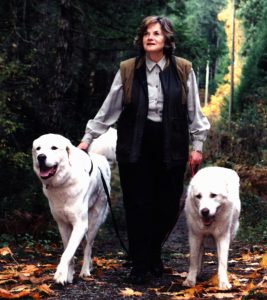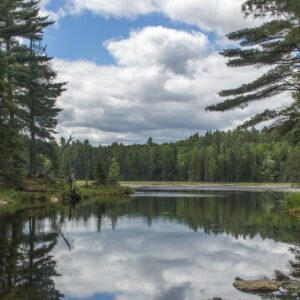A conversation between Women for Nature members, Professor Ann Dale and Candice Batista

Candice Batista, Women for Nature Member
Featuring Women for Nature member Professor Ann Dale. Written by fellow Women for Nature member Candice Batista.
I had the opportunity to interview fellow Woman for Nature, Professor Ann Dale (who is also the co-chair for Women for Nature) about her love of nature and what led her to become a leader in environmental stewardship in Canada.
When I read her resume I was blown away, I mean this woman is impressive; she’s received national and international recognition for her research in the field of sustainable community development. Her research on governance, innovation and community vitality is designed to provide useful knowledge to Canadian decision-makers.

Professor Ann Dale, co-chair for Women for Nature
She is deeply committed to online conversations on critical public policy issues and novel research dissemination tools, such as her YouTube channel (yep she has her own channel) HEADTalks. As well, she is an active researcher leading MC3, a climate change adaptation and mitigation research program studying best practices and community innovations in throughout British Columbia. Wow right?
Our conversation was so inspiring, she, like me, has loved animals her whole life. Here’s a closer look at this inspiring lady.
Candice Batista: Why did you get involved with women for nature?
Ann Dale: Let me start at the beginning, I was a tomboy, I was always outside, in fact when my parents made me come inside, they were punishing me. So it’s kind of ironic that I ended up in academics. If I had become a wildlife biologist, I would be able to be outside most of the time. I have always loved animals. I’ve had dogs since I was six years old and I would not be the person I am today if those animals had not been in my life.
I never really had a definitive a career path, like all the guys I grew up with that wanted to be doctors and lawyers, I did not know what I wanted to be.
But there were two criteria that I used for my jobs; first, it is going to make a difference and the second was I was going to learn something, learn something to improve myself and that guided my career choices. I followed my heart and never lost my love for being outside. I am an avid swimmer and in my late 30’s I became a part-time gardener, so anything I could do to be outside would work. With Women for Nature, I saw a way to empower younger women to make a difference through this group in many different ways. Biodiversity conservation is the social imperative for this decade and the next decade. There is no second chance.
CB: We really need to get our acts together when it comes to the loss of biodiversity and conservation.
AD: I don’t think it’s going to take as long for people to get our act together as it did with climate change because people can now see and feel climate change, I mean everyone is talking about this past winter in Canada. So people can see even more loss of biodiversity and once they start making critical connections between biodiversity, climate change and sustainability, I think we will start moving fast. What would Canada be like without any polar bears or the call of the common loon in the spring?
CB: What advice do you have for future Women of Nature?
 AD: Learn as much as you can about your neighbourhood, get outside, walk it, live it, breathe it. One of the things I have learned in my travelling is you need to walk, to get to really know a place. Get as much education as you can in so many different areas, be as ecologically literate as you are professionally literate. We have so much to learn from nature, there is so much wisdom if you just keep your eyes, your ears and your heart open to what is out there.
AD: Learn as much as you can about your neighbourhood, get outside, walk it, live it, breathe it. One of the things I have learned in my travelling is you need to walk, to get to really know a place. Get as much education as you can in so many different areas, be as ecologically literate as you are professionally literate. We have so much to learn from nature, there is so much wisdom if you just keep your eyes, your ears and your heart open to what is out there.
CB: What does nature really mean to you?
AD: Nature to me is everything outside. That even means bringing nature back into our cities, nature makes cities more livable. The other day there were two raccoons stuck in a garbage can near our condo and nobody knew what to do with them. So I just put a stick in and they crawled out, We need to share our space with the ‘others’, if you see a live worm on the pavement following a rain storm, take a moment and move it back onto the grass.
I would like to add that I will be leading a series of on-line virtual conversations on why biodiversity conversation is the human imperative of this century, with other women from Women for Nature, starting this September. You can listen in to these e-conversations at here.



